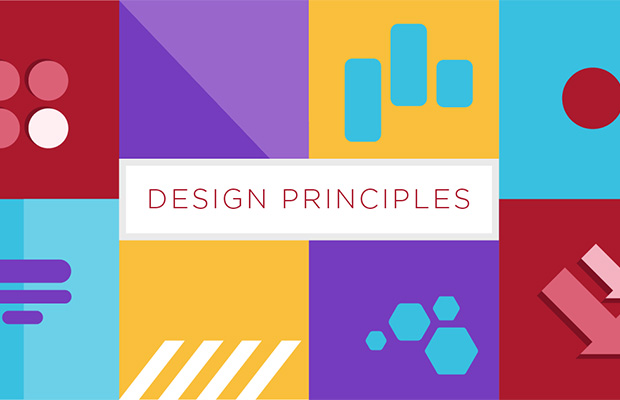In order to build your brand image, you must know about the five design principles in advertising. Read on to know more.
Be mindful of design’s influence. 50% of companies say that design plays a massive role in how they achieve success. After all, design shapes initial perceptions and how customers view your brand.
In order to make your next project stand out, this blog will walk you through the fundamentals of advertising design.
Table of Contents
5 Principles of Design and Their Application
How the various components are arranged in relation to the overall design is determined by the design principles. These guidelines are essential for effectively delivering the intended message. Let’s examine the five design tenets used in advertising.
1. Balance
Visual harmony and order are created by a balanced layout. Tenseness results from an unbalanced layout. Size, position, element spacing, color harmony or dissonance, shapes, etc. are just a few of the many elements that affect balance. There are no unbreakable rules; your layout can be symmetrical and still be unbalanced, and it can also be asymmetrical while still being perfectly balanced by combining sporadic elements in a symphony. The idea is to give your customer a seamless, thoughtful experience.

Not because unbalanced work serves no purpose. In order to elicit the response you want for a given marketing campaign, you may occasionally want to create tension. However, equilibrium is generally preferred. Balance is not the same as being dull. In a balanced design, you can generate constructive tension.
2. Proximity
Without overcrowding the design, proximity establishes a connection between like-minded or connected elements. Important design elements like color, font, and size create a visual connection through proximity to create ideal display ad designs. The viewer receives a visual cue when the most crucial elements are placed close together, which allows them to decipher the crucial information in your display advertisement.
The logo for Unilever serves as a prime illustration. Where the miniature 25 icons are intricately woven together in close proximity to make the “U.”
3. Alignment
For display ad designs, alignment produces a clean, organized appearance. It establishes a logical flow that is pleasing to the eye and keeps the audience’s interest. It helps you structure your ad copy and visuals in a way that will make the design look finished. Text that is aligned to the left, right, or center is frequently used in designs. Clean lines and lots of eye-catching white space are produced by this design principle.
4. Repetition
The unification and reinforcement of each element is the secret to a successful design. Reusing specific important design components is mentioned in the fundamental rule of repetition. This will help the audience easily recognize and identify your brand. It makes a design more unified if the same color or font is used repeatedly.
Your design can be more cohesive if certain elements are repeated, such as colors, fonts, text, or shapes. Repetition also introduces a rhythm that produces a more streamlined and uniform appearance. It can be divided into two categories: fluid (where there is only one direction of flow) and progressive (where there is a visual transition between various elements). For instance, it’s a good idea to use your logo’s colors repeatedly throughout the design of your display ads.
5. Contrast
Contrast can be created through type styling, the use of texture, complementary colors, how type interacts with color, or the interaction of ordered, gridded, repetitive, and chaotic random textures. The use of contrast in design carries an energy that reflects our responses to light and dark, day and night, dull and sharp, happy and sad, and other aspects of life.
Without contrast, the danger is we live in “…the gray twilight that knows neither victory or defeat” (Theodore Roosevelt). monotony of the average. Design’s beige minivan Which, despite having a high safety rating, is the riskiest marketing tool.
Also Read: Types of Search
The Objective of Design Principles in Marketing
The objective of visual design from a marketing point of view is to organise relevant information in a clear and consistent way. It aids in illuminating the audience’s focus. It teaches them how to order the information they see. Your aim is to reduce the amount of “work” the audience has to do to understand the intent. And the amount of “work” to actually use the information.
When you can help the audience do this, your visual design helps to drive more impactful communications and customer experiences. When there is an effective visual design, customers comprehend and engage more.
Finally, there are always restrictions and limitations on how much information can fit in the available space in any design work. So design principles in marketing help you deliver your message in the most efficient way given the space you have to play with.
Final Words on Design Principles in Advertising
You can treat widespread banner blindness with good design and strategic targeting.
Any display advertising effort must succeed if the basic design principles discussed above are understood and applied. The impact of each of these principles on designers’ day-to-day work is crucial for them to comprehend. Advertising may involve a lot of back and forth if these design principles are not understood.
You can also give your users the best experience possible if you abide by the aforementioned rules. To effectively tell a story with your display ads, all design components must work together harmoniously.
Also Read:
FAQs
What is Design Marketing?
Marketing design applies graphic design principles to the ultimate goals of a marketing effort.
Why Are the Principles of Design in Advertising Important?
You can organize the project’s various components with the aid of design principles. A strong visual impact is also facilitated by them.
Why is Harmony Important in Art?
All the elements in a display ad design connect and flow together when there is harmony, or a feeling of continuity. This is not only a very important component of display advertising; it is also its most adaptable principle.
Is Graphic Design a Good Career?
Graphic design is a fantastic career choice if you are creative and like to express yourself through art. Graphic designers have a wide range of opportunities as the demand for display advertising rises across all industries.
Is Graphic Designing Easy?
The most important requirement is having an aptitude for art and design as well as creative thinking. Additionally, graphic design courses give you the skills you need to launch a career in design.





